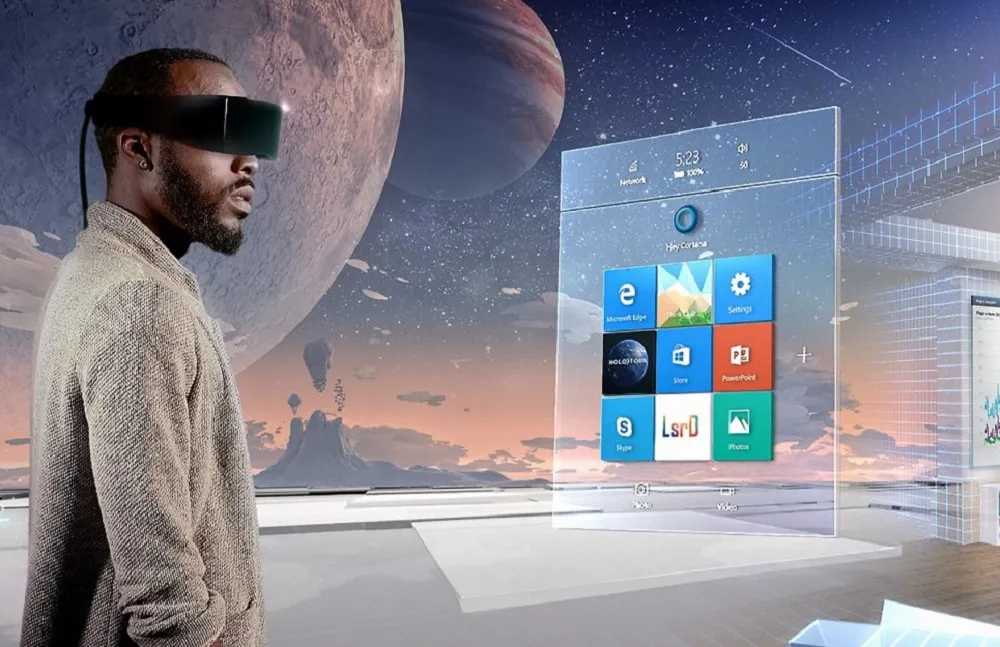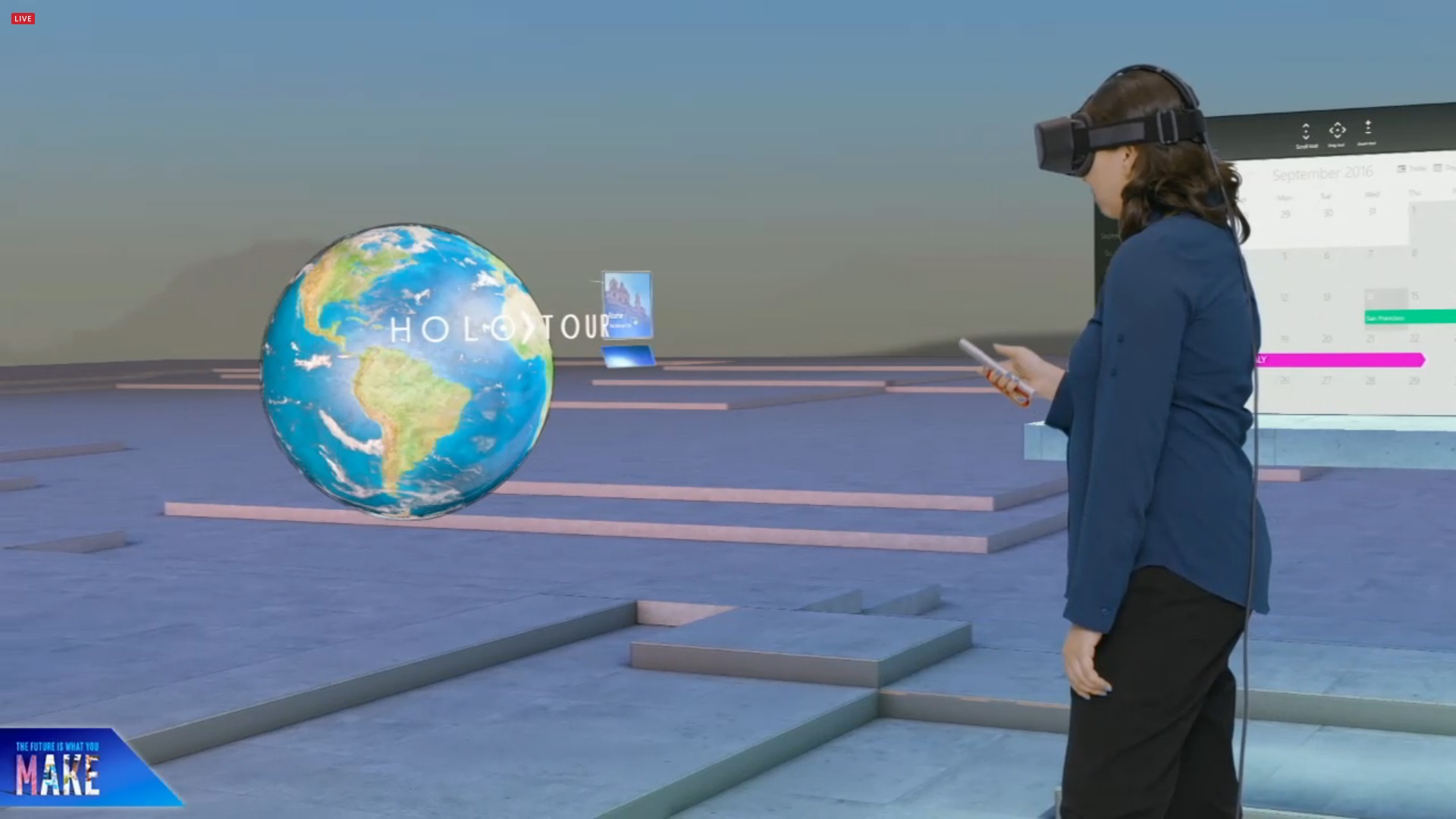If you’re using the HTC Vive, Oculus Rift, or any other mainstream headset, you know that productivity and business applications are already here. Virtual Desktop lets you access your PC from within a VR headset, Envelop lets you surround yourself in applications from all sides, and BigScreen makes your desktop browsing experience inherently social and collaborative.
Now, at the 2016 Intel Developer Forum (IDF), Intel CEO Brian Krzanich announced during the Keynote presentation that Windows Holographic would be available for all mainstream Windows 10 PCs starting in 2017. It appears that Windows may be targeting this market directly and attempting to take control before other applications gain much more ground.
The biggest alteration in comparison to other applications, such as Envelop and Virtual Desktop, is that Windows Holographic utilizes a distinctly skeuomorphic design. This means that objects are represented in three-dimensions and resemble real-life objects, whereas the former programs utilize a flat displays. They put your screen into VR, but Windows Holographic appears to attempt at bringing you into VR instead. Objects more believably surround you in 3D. Intel is using terms like ‘mixed reality’ and ‘merged reality’ very purposefully.
Windows Holographic will feature the power of Windows Universal Apps, all inside VR. Microsoft seems to want Windows 10 to play nice with a variety of AR and VR hardware, with HoloLens likely being the first.
On the official Windows blog, Terry Terry Myerson writes:
Intel and Microsoft are collaborating on a specification for mixed reality ready PCs and head mounted displays (HMDs). Our shared goal is to enable our hardware partners to build a broad range of devices for the mainstream consumer and business markets. We are working with several partners on the spec today, and plan to publicly release v1 of the spec at the Windows Hardware Engineering Community (WinHEC) conference in Shenzhen in December.
Next year, we will be releasing an update to Windows 10, which will enable mainstream PCs to run the Windows Holographic shell and associated mixed reality and universal Windows applications. The Windows Holographic shell enables an entirely new experience for multi-tasking in mixed reality, blending 2D and 3D apps at the same time, while supporting a broad range of 6 degrees of freedom devices.
We don’t know the exact release date yet, but the announcement included the general date of 2017, hopefully during Q1. The video below includes the full demonstration:
https://www.youtube.com/watch?v=Gu09UWqS8-Q































